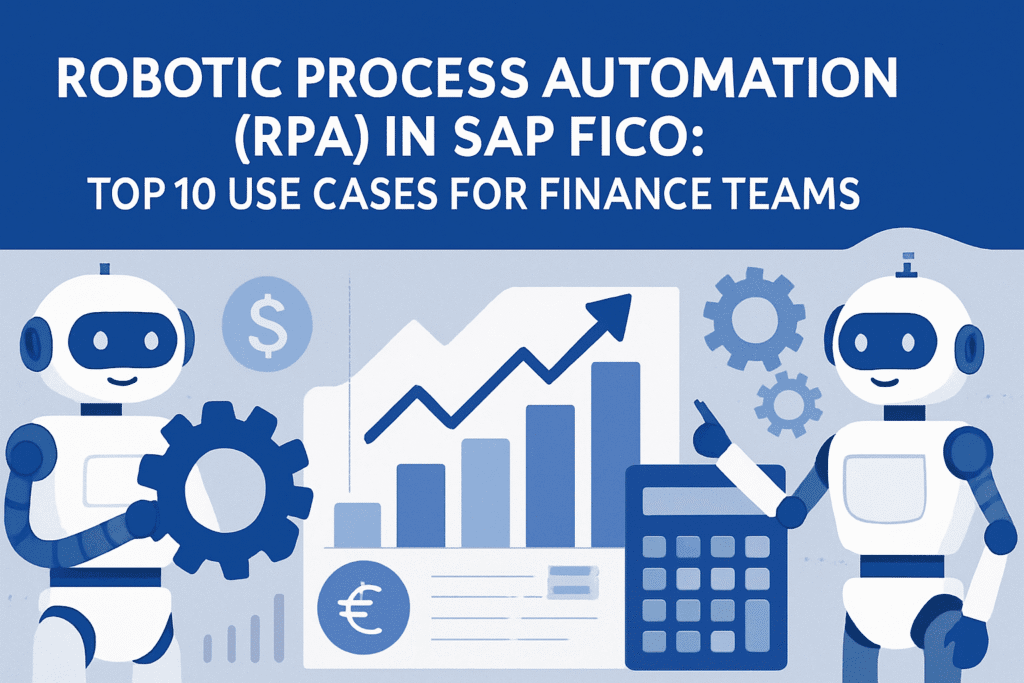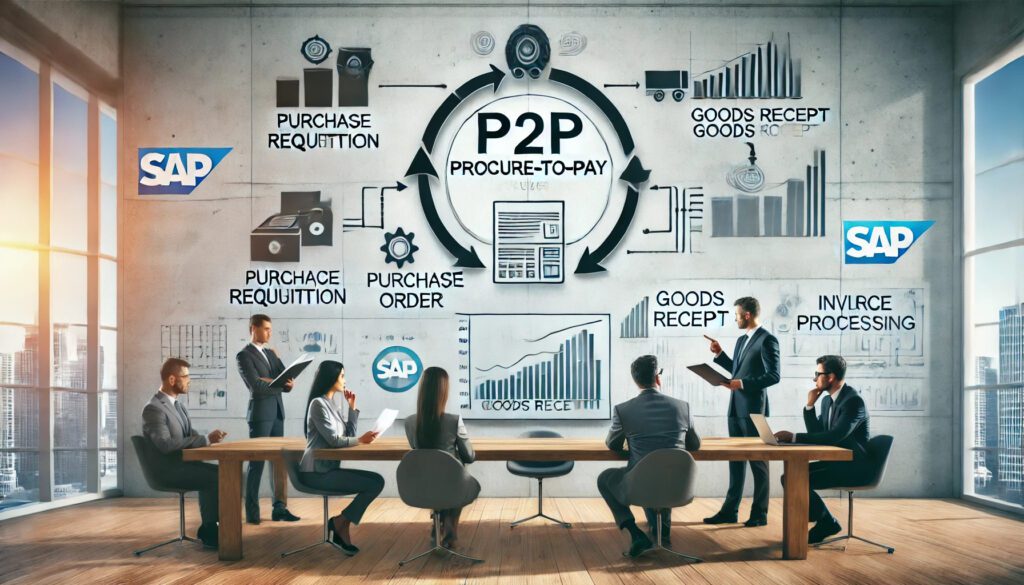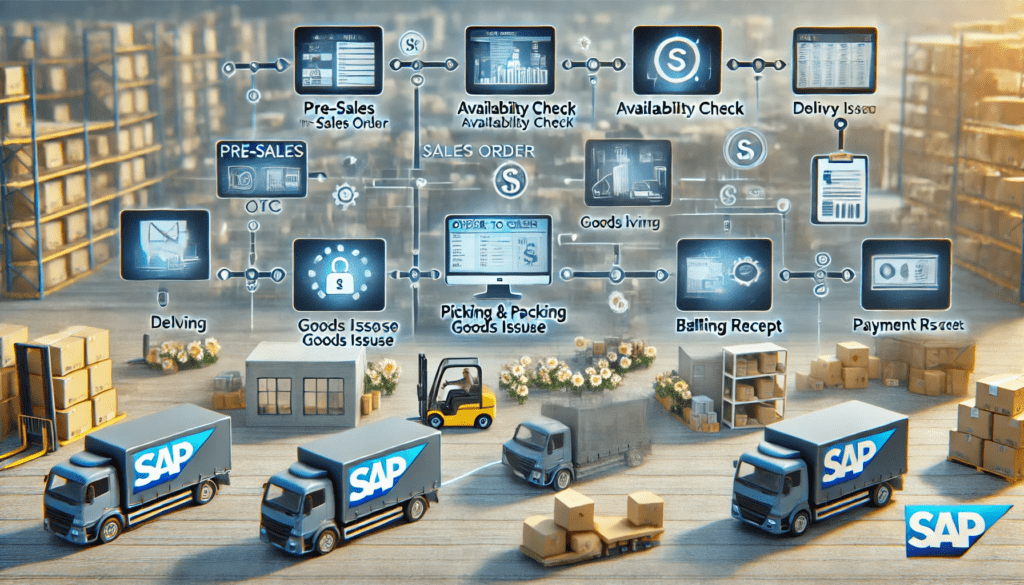RPA in SAP FICO represents a transformative approach to financial process automation, where software bots execute repetitive, rule-based tasks within SAP’s Financial Accounting and Controlling modules. By integrating with SAP S/4HANA and other ERP systems, RPA enables finance teams to achieve 93% efficiency improvements in invoice processing, reduce manual errors by 90%, and free up valuable resources for strategic financial analysis.
Why RPA Matters in SAP FICO
Finance organizations face mounting pressure to accelerate closing cycles, ensure regulatory compliance, and deliver real-time insights while managing increasing transaction volumes. RPA addresses these challenges by automating data-intensive tasks across accounts payable, accounts receivable, general ledger operations, and financial reporting. Unlike traditional system integrations, RPA bots interact with SAP through the same user interfaces that humans use, making implementation faster and less disruptive.
Top 10 RPA Use Cases for SAP FICO
1. Automated Invoice Processing and Three-Way Matching
RPA transforms accounts payable by automatically capturing invoice data, validating vendor information, and performing three-way matching between purchase orders, goods receipts, and invoices. Bots can process invoices 45 seconds versus 12 minutes manually, achieving 93% efficiency gains. The automation includes optical character recognition (OCR) for data extraction, automatic posting to SAP, and exception routing for approval workflows.
Key Benefits:
- Reduced processing time from hours to minutes
- Elimination of duplicate payments through systematic validation
- Improved discount capture through faster processing
- Enhanced audit trails with complete documentation
2. Cash Application and Payment Matching
RPA automates the complex process of matching incoming payments to outstanding invoices in accounts receivable. Bots extract remittance information from bank statements, emails, and payment portals, then use machine learning algorithms to match payments with open items. This significantly reduces days sales outstanding (DSO) and improves cash flow management.
Implementation Features:
- Automated electronic bank statement processing
- Intelligent matching using customer-specific payment patterns
- Real-time cash position updates
- Automated dispute creation for short payments
3. Financial Close Orchestration and Monitoring
Month-end and year-end closing processes benefit tremendously from RPA automation. Bots execute closing checklists, run SAP standard programs, perform reconciliations, and generate management reports. Organizations using automated closing processes reduce closing time from two weeks to two days while ensuring complete audit trails.
Automation Components:
- Automated execution of SAP closing transactions
- Real-time monitoring of closing progress across entities
- Exception handling with automated escalations
- Standardized reporting package generation
4. Bank Reconciliation and Statement Processing
Bank reconciliation represents a perfect RPA use case due to its repetitive, rule-based nature. Bots automatically download bank statements, import them into SAP, match transactions against general ledger entries, and identify discrepancies for manual review. This process traditionally taking hours can be completed in minutes with high accuracy.
Process Automation:
- Automated bank statement download and import
- Intelligent transaction matching using predefined rules
- Automated posting of routine transactions like bank charges
- Exception reporting for unmatched items
5. Vendor and Customer Master Data Management
Master data governance becomes more reliable through RPA automation. Bots validate new vendor and customer information against external databases, ensure compliance with naming conventions, and synchronize updates across multiple systems. This reduces downstream errors in procurement and sales processes while maintaining data quality standards.
Automation Capabilities:
- Automated validation against external databases
- Standardization of naming conventions and formats
- Workflow routing for approvals based on business rules
- Real-time synchronization across SAP modules
6. Accounts Receivable Collections and Dunning
RPA enhances collections management by automating dunning procedures, customer communication, and payment follow-ups. Bots can assess customer payment history, generate personalized collection letters, and trigger escalation workflows based on predefined criteria. This systematic approach improves collection rates while maintaining positive customer relationships.
Key Automations:
- Automated dunning run execution based on aging schedules
- Personalized communication generation using customer data
- Credit limit monitoring with real-time alerts
- Collections workflow management with escalation rules
7. Journal Entry Processing and Recurring Postings
Routine journal entries, accruals, and allocations can be automated through RPA. Bots extract data from various sources, apply accounting rules, and post entries to the appropriate SAP accounts. This includes monthly accruals, depreciation calculations, and intercompany eliminations.
Implementation Features:
- Template-driven journal entry creation
- Automated period-end accrual calculations
- Multi-company posting with currency conversions
- Approval workflow integration for material entries
8. Tax Reporting and Compliance Automation
RPA streamlines tax compliance by automating data collection, tax calculations, and regulatory filing preparation. Bots can extract transactional data from SAP, apply appropriate tax rules, and generate compliance reports for various jurisdictions. This is particularly valuable for e-invoicing mandates and VAT reporting.
Compliance Features:
- Automated tax data extraction and validation
- Multi-jurisdiction tax calculation and reporting
- E-invoicing integration with government portals
- Audit trail maintenance for regulatory reviews
9. Expense Management and Reimbursement Processing
Employee expense processing benefits from RPA through automated receipt scanning, policy validation, and reimbursement processing. Bots can extract data from expense receipts, verify compliance with company policies, route for approvals, and post reimbursement entries to SAP.
Process Enhancements:
- OCR-based receipt data extraction
- Automated policy compliance checking
- Integration with travel booking systems
- Real-time expense reporting and analytics
10. Financial Reporting and Analytics Automation
RPA transforms financial reporting by automating data extraction, report generation, and distribution. Bots can compile data from multiple SAP modules, perform calculations, and produce standardized reports for management and regulatory purposes. This ensures consistency and timeliness in financial communications.
Reporting Capabilities:
- Automated consolidation across entities and currencies
- Real-time dashboard updates with KPIs
- Regulatory report generation and filing
- Management report distribution with personalization
Strategic Implementation Considerations
Technology Integration
Modern RPA implementations leverage SAP Build Process Automation and SAP Intelligent RPA for seamless integration with S/4HANA. These platforms provide pre-built templates, low-code development capabilities, and native SAP connectivity. Integration with AI and machine learning enhances automation accuracy through intelligent document processing and predictive analytics.
Governance and Compliance Framework
Successful RPA implementations require robust governance structures including bot lifecycle management, access controls, and audit compliance. Organizations must establish centers of excellence to manage bot development, deployment, and maintenance while ensuring segregation of duties.
Change Management and User Adoption
RPA transformation affects finance team roles and responsibilities, requiring comprehensive change management. Training programs should focus on bot monitoring, exception handling, and strategic analysis skills that complement automation.
Measurable Business Impact
Organizations implementing RPA in SAP FICO typically achieve:
- 50-70% reduction in processing time for routine transactions
- 90% improvement in accuracy for data-intensive processes
- 57% reduction in finance costs as percentage of revenue
- 40% increase in transaction volumes without additional headcount
- ROI realization within 6-12 months of implementation
Future-Ready Finance Operations
RPA in SAP FICO represents more than task automation—it enables intelligent finance operations that combine process efficiency with strategic insight generation. By integrating with SAP’s embedded AI capabilities and advanced analytics, finance teams can transition from transactional processing to predictive analysis and strategic decision support.
The convergence of RPA, artificial intelligence, and cloud-native SAP solutions creates unprecedented opportunities for finance transformation. Organizations that embrace this integrated approach position themselves for sustainable competitive advantage through operational excellence and strategic agility.




RPA companies are promoting them as Agentic AI companies – What is your take on this ? Is it rebranding or RPA tools are evolving/dead !
Great question, Niladri. In my view, it’s not a rebrand so much as an expansion. Classic RPA (rules-based, UI-driven) is evolving into “agentic” automation by adding three layers:
Intelligence: IDP/LLMs for unstructured docs and better exception handling
Orchestration: workflow, APIs, and event triggers instead of only screen bots
Autonomy with guardrails: policies, approvals, and human-in-the-loop
RPA isn’t dead—it’s becoming a broader automation stack. In SAP FICO, that means bots still handle stable tasks (invoice capture, cash app, GR/IR, journals), while AI-driven agents assist with judgments (coding variances, dunning narratives, anomaly flags). The winning pattern is hybrid: API-first where possible, RPA when needed, AI for ambiguity, all governed with auditability in SAP.